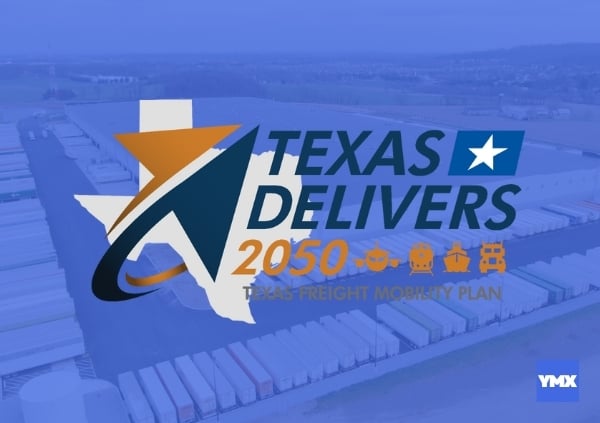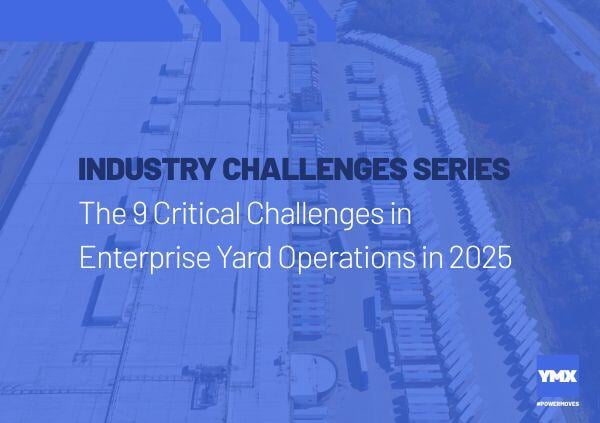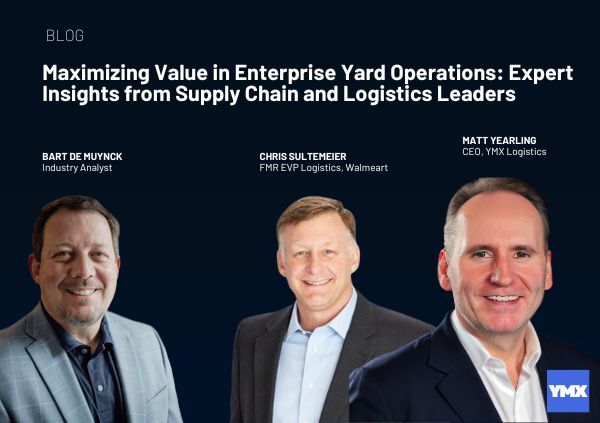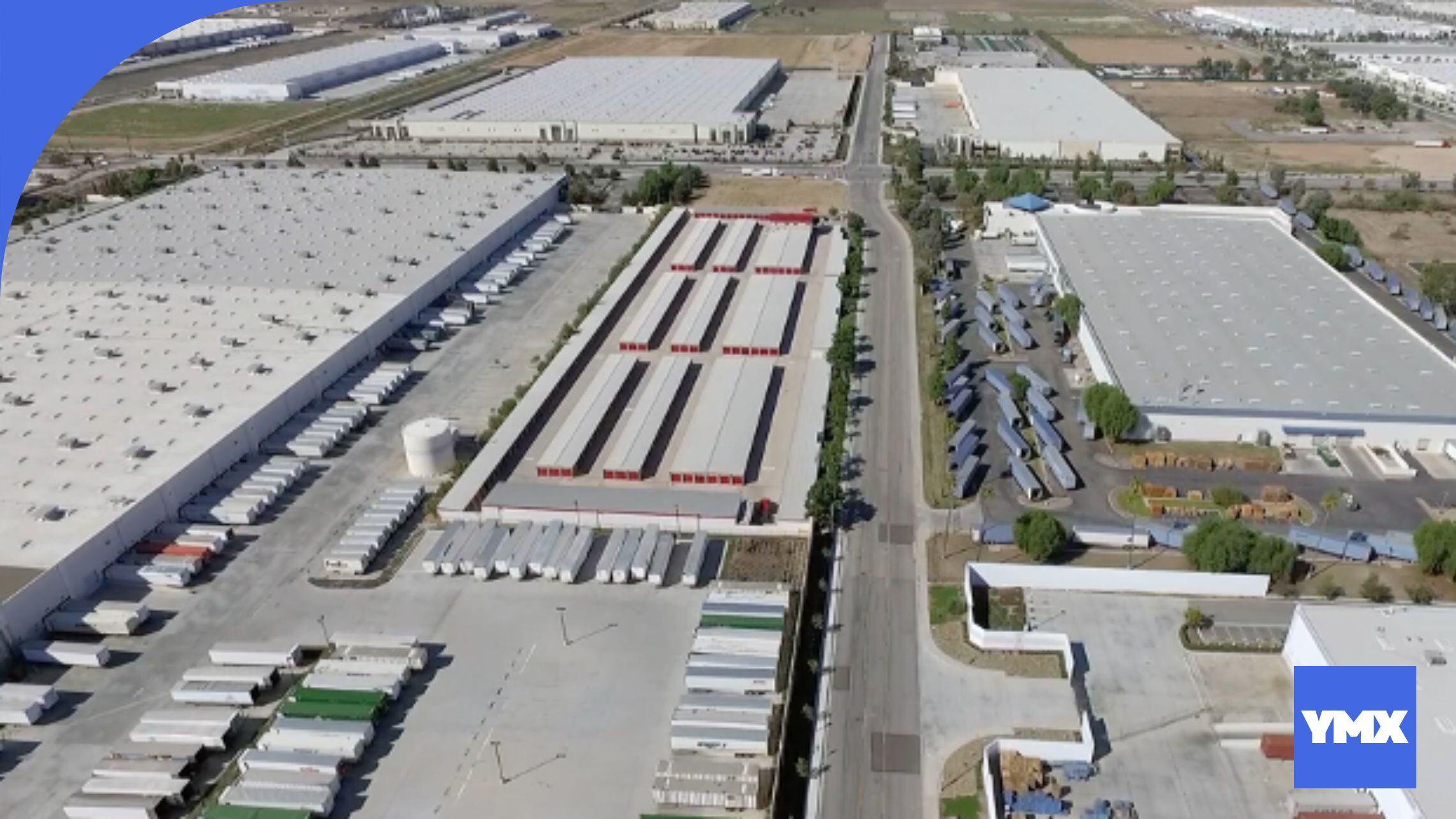In January 2023, the Texas Department of Transportation (TxDOT) released Texas Delivers 2050, a visionary freight plan outlining how the state will adapt to rapidly changing supply chain demands through 2050. The strategy lays the groundwork for a more resilient, connected, and sustainable freight network. For those of us in yard operations, there’s a lot to unpack.
This plan isn’t just about highways and rail lines. It’s about reimagining the ecosystem that keeps freight moving. Here’s what you need to know and why it matters for your yard.
What Is Texas Delivers 2050?
Texas Delivers 2050 is the state’s long-range freight and goods movement plan. Its mission is clear: connect people and commerce in Texas by supporting shippers, carriers, and consumers with smart infrastructure and multimodal integration.
The plan builds on the 2018 Texas Freight Mobility Plan but expands in scale and scope. It addresses future challenges including:
- Population growth
- Freight volume increases
- Labor shortages
- Alternative fuel adoption
- Environmental equity
All while laying out the infrastructure and policies needed to respond.
Key Takeaways in Texas Delivers 2050
- 1,500 Miles of New Freight-Ready Highways: TxDOT is expanding the Texas Multimodal Freight Network (TMFN) by 1,500 miles of highway and 3 new airports, reinforcing Texas’ role as a freight corridor powerhouse. New highway designations prioritize urban-rural connectivity, especially in the DFW area, Permian Basin, and around Laredo.
- Freight-Focused Innovation: The plan calls for Freight Mobility Innovation Hubs, including expanded warehouse and distribution center capacity near international gateways. It emphasizes the need for connected logistics, smart technologies, and autonomous systems to offset labor shortages.
- Alternative Fuel Infrastructure: With the freight industry moving toward electric, hydrogen, and biodiesel-powered vehicles, Texas Delivers 2050 highlights the need for fueling stations along strategic corridors. This shift will add new freight demand—especially for transporting hydrogen and ammonia—making yard preparedness critical.
- Labor Shortages and Automation: TxDOT flags the ongoing labor gap as a long-term risk to freight resilience. The plan strongly encourages autonomous vehicle development and advanced logistics technology, making yard automation and tech-enabled workflows more relevant than ever.
- Environmental and Community Considerations: Noise, vibration, emissions, and equity are part of the freight conversation now. This signals a future where yards must operate with greater environmental awareness, investing in cleaner equipment, and smarter layouts to minimize community impact.
What This Means for Yard Operations
As we know, yard operations are critical in an increasingly complex, technology-driven supply chain. Here's how the Texas Delivers 2050 plan directly intersects with yard management: - Increased Freight Throughput: Expanded corridors and trade hubs (especially around Laredo) will funnel more volume through yards. Efficiency and speed will define competitiveness.
- Fueling and Charging Capabilities: As fleets transition to alternative fuels, yards may need to support in-yard fueling or charging infrastructure, reshaping yard design and operations.
- Automation is a Must: With labor shortages intensifying, automation, from gate to dock, will be essential for consistent throughput.
- Environmental Compliance: Expect greater pressure to reduce emissions and noise, particularly for yards near residential or underserved communities.
- Strategic Location Planning: The plan’s investment in specific corridors means not all yards will be equally positioned for future freight flows. Proximity to the Texas Highway Freight Network and intermodal hubs will be a strategic advantage.
How YMX Logistics Is Leading the Charge
While Texas Delivers 2050 sets the long-term vision, YMX Logistics is helping shippers act on it today. We’ve secured $1.95 million in funding for Texas-based shippers through the Diesel Emissions Reduction Incentive (DERI) Program and the Texas Emissions Reduction Plan (TERP) to support the electrification of yard truck fleets.
What makes this different?
Unlike traditional grant programs that leave shippers to navigate the complex funding process on their own, YMX handles the heavy lifting, from application to implementation. We’ve designed a seamless experience for fleet operators looking to electrify without disrupting operations.
Whether you operate a private yard, contract with 3PLs, or manage a fleet near one of the state’s designated freight corridors, this is your opportunity to take advantage of meaningful incentives. You can expect: - Cleaner fleets
- Lower operating costs
- Increased uptime and compliance
It’s a tangible way to bring the goals of Texas Delivers 2050 to life while making immediate gains in sustainability and efficiency.
Texas Is Creating a Freight Transformation Roadmap
Texas is planning ahead—and it’s doing so with a sharp focus on freight efficiency, resilience, and equity. Texas Delivers 2050 isn’t just a DOT blueprint; it’s a freight transformation roadmap that stretches all the way to the gates of your yard.
The message is clear: evolve now or fall behind. For those in yard operations, this is the time to think bigger about infrastructure, technology, sustainability, and the role your yard plays in a freight system built for 2050.
YMX is ready to deploy TERP/DERI-funded EV yard trucks at your Texas facility. Learn how we can electrify your fleet and secure your rebate.





